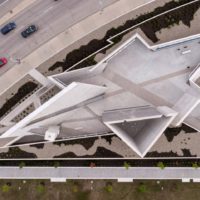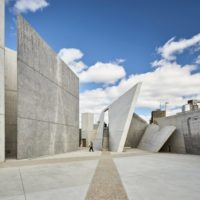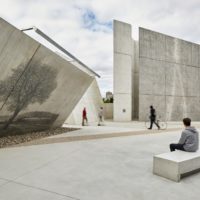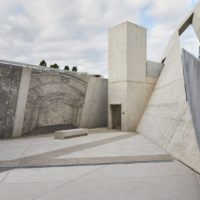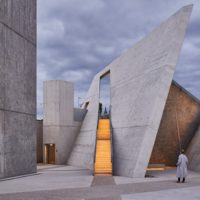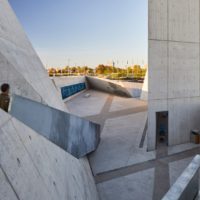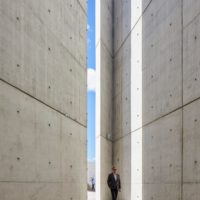The New York-based architectural firm of Daniel Libeskind has just completed the construction of the National Holocaust Monument in Ottawa, Canada. The monument features high walls of concrete that resemble a diagonally-stretched Star of David. Badges of the hexagonal Jewish symbol were worn by the Jews, complying with the Nazi orders to distinguish them.
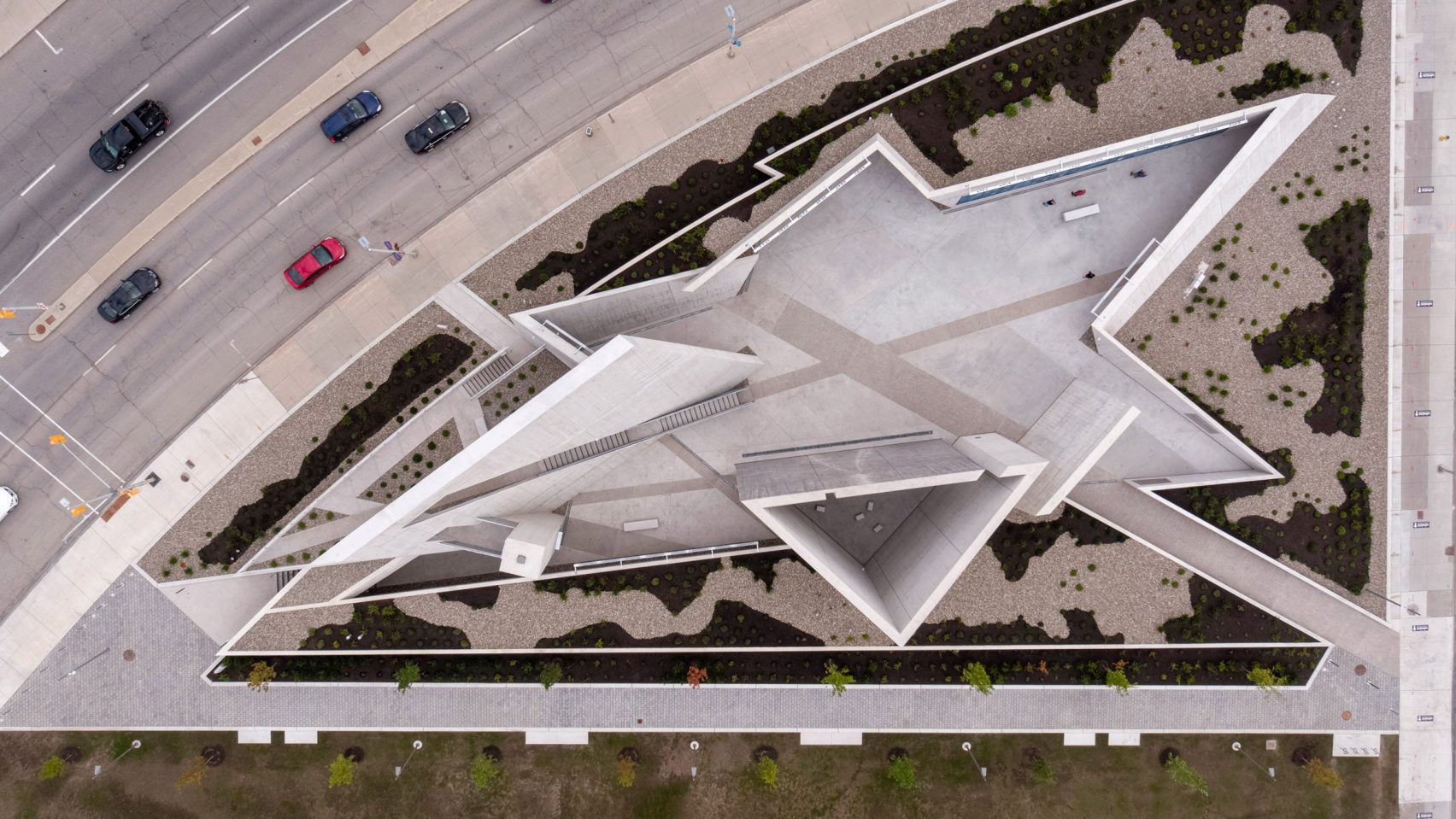
Courtesy of Daniel Libeskind – Photography: Doublespace
The monument, which was inaugurated on the 27th of September 2017, represents the first Canadian monument built in tribute to the Holocaust victims. It acknowledges the millions of Jews who suffered from the Nazi massacres during World War II. It also pays respect to the Jews who had resorted to Canada, escaping from Hitler’s persecution.
“This monument not only creates a very important public space for the remembrance of those who were murdered in the Holocaust, but it also serves as a constant reminder that today’s world is threatened by anti-Semitism, racism, and bigotry,” commented Libeskind on the monument.
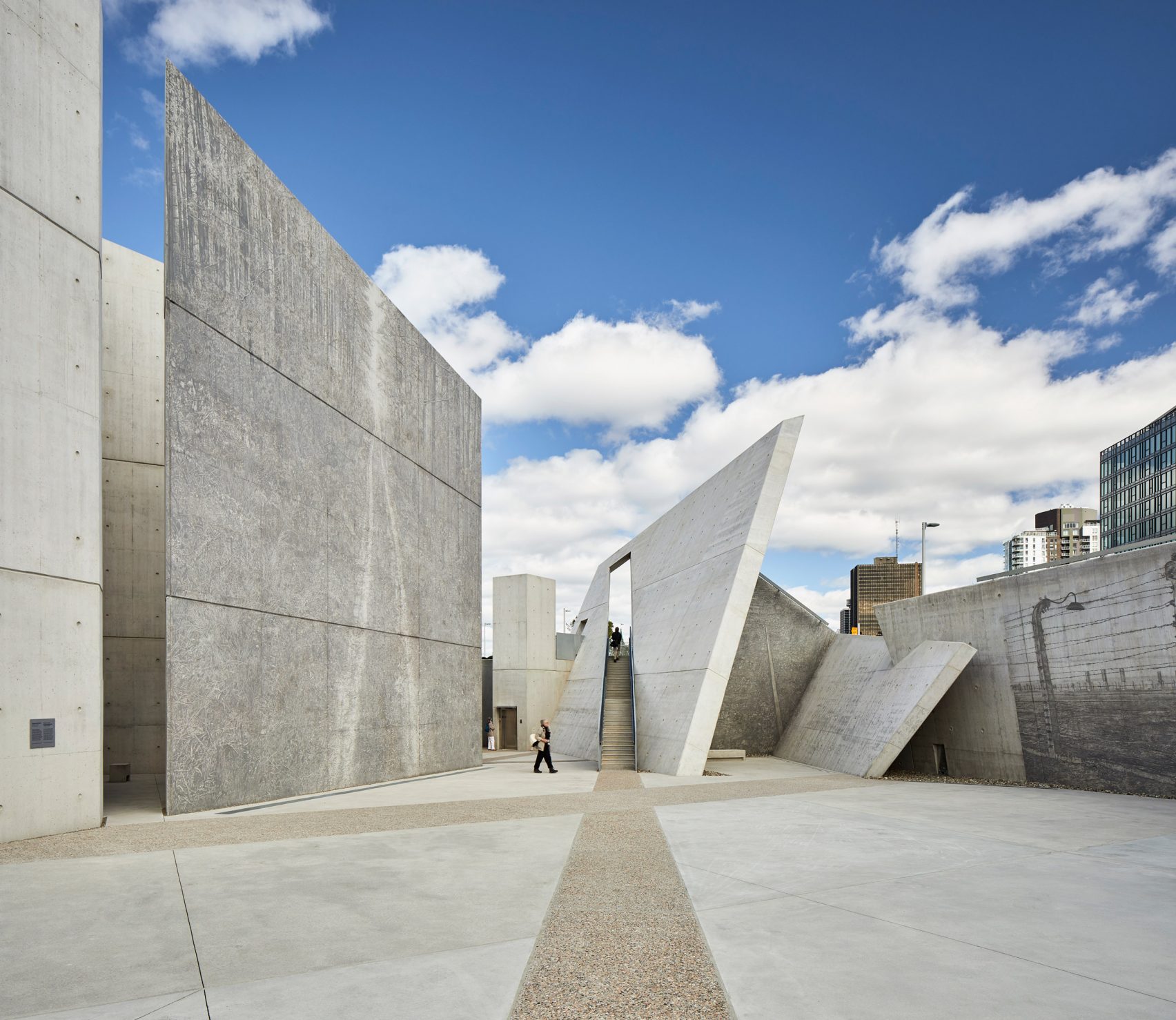
Courtesy of Daniel Libeskind – Photography: Doublespace
The monument, which takes up an area of 0.8 acres, includes six volumes. The tallest volume in the monument is dubbed “Sky Void”. “Sky Void” is enclosed by three 4-meter-high walls, one of which has a thin slit for an entrance. The interior of Sky Void comprises the Flame of Remembrance and has a limited view of the city. A narrow stairway emerges from the main congregation space and passes right through an inclined wall. The stairs go up leading to a terrace that overlooks the buildings of the Canadian Parliament.
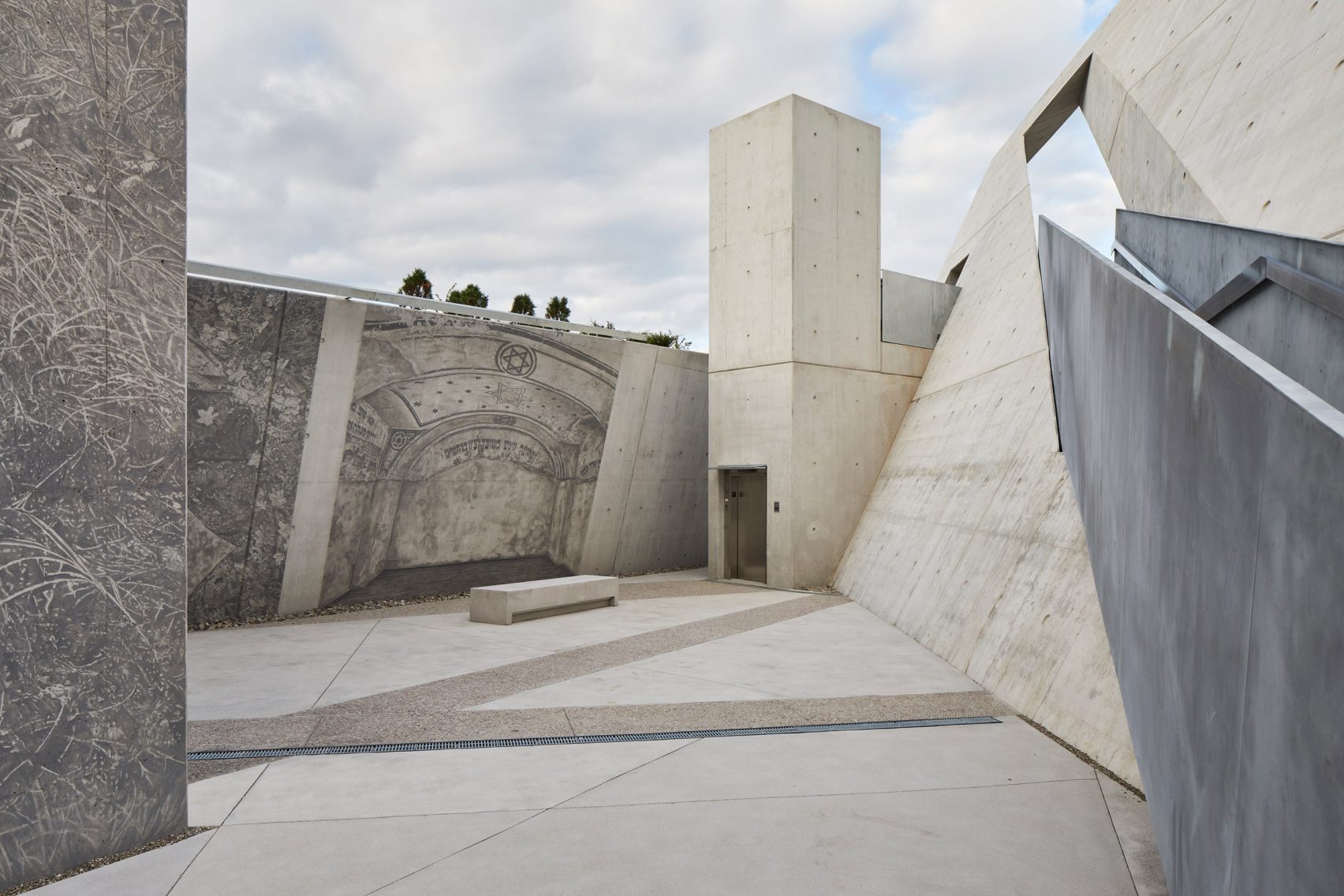
Courtesy of Daniel Libeskind – Photography: Doublespace
Large-scale pictures by the Canadian photographer and artist, Edward Burtynsky, are painted in detail on the concrete walls. The pictures depict several Holocaust sites like the killing fields and the concentration camps.
“These evocative murals aim to transport the visitor and create another dimensionality to the interiors spaces of canted walls and labyrinth-like corridors,” declared Libeskind studio.
The Conifer trees that were planted around the monument “will evolve over time, representative of how Canadian survivors and their children have contributed to Canada”.
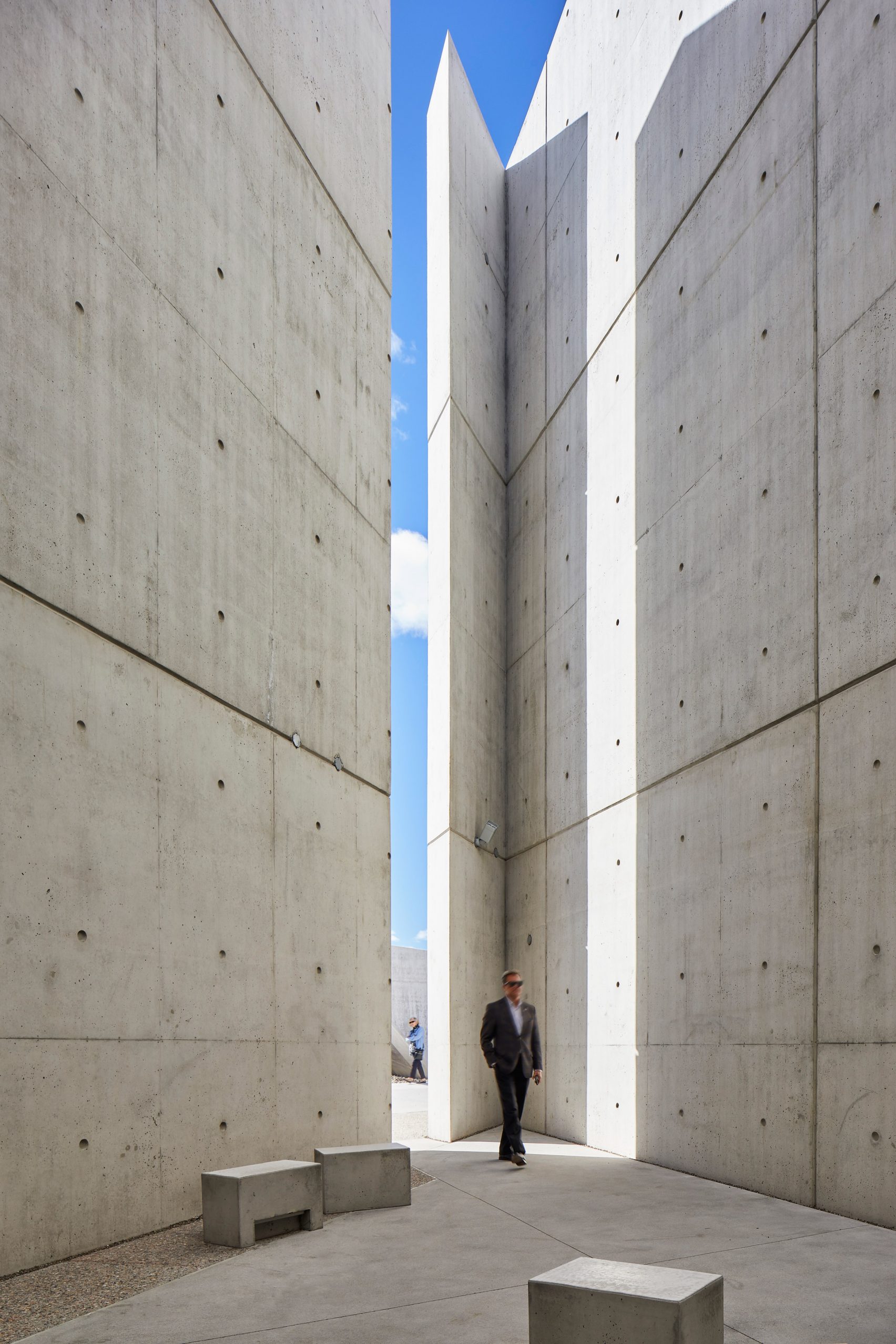
Courtesy of Daniel Libeskind – Photography: Doublespace
“Canada has upheld the fundamental democratic values of people regardless of race, class or creed, and this national monument is the expression of those principles and of the future,” said Daniel Libeskind.
Many efforts joined to establish this significant project including those of the consultant team from Lord Cultural Resources firm. Claude Cormier contributed as the landscape designer whereas Edward Burtynsky was the photographer. Also, Holocaust scholar Doris Bergen was on the project team.
In 2014, Libeskind firm beat the proposals of Ron Arad and David Adjaye and won the contest to design this project.
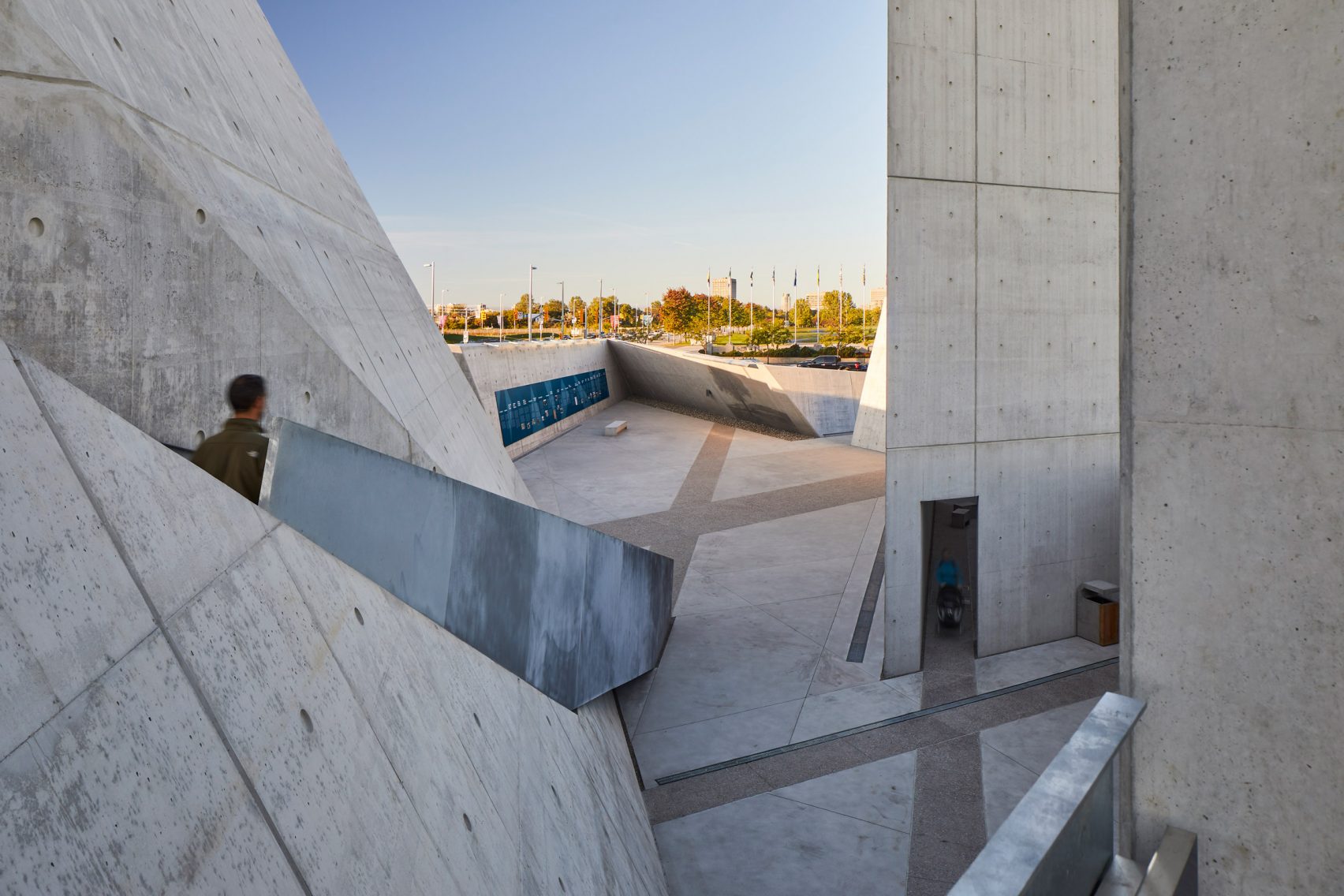
Courtesy of Daniel Libeskind – Photography: Doublespace
Daniel Libeskind is a prominent Jewish architect who immigrated from Poland and settled in the United States. The Royal Ontario Museum, the Jewish Museum in Berlin, and the Dresden Museum of Military History are among his best works. All of the former projects feature the architect’s sharp geometric style he is famous for. The architect was chosen to design another memorial in Ohio to honor the Holocaust victims who perished between 1933 and 1945.
- Courtesy of Daniel Libeskind – Photography: Doublespace
- Courtesy of Daniel Libeskind – Photography: Doublespace
- Courtesy of Daniel Libeskind – Photography: Doublespace
- Courtesy of Daniel Libeskind – Photography: Doublespace
- Courtesy of Daniel Libeskind – Photography: Doublespace
- Courtesy of Daniel Libeskind – Photography: Doublespace
- Courtesy of Daniel Libeskind – Photography: Doublespace
- Courtesy of Daniel Libeskind – Photography: Doublespace
- Courtesy of Daniel Libeskind – Photography: Doublespace


